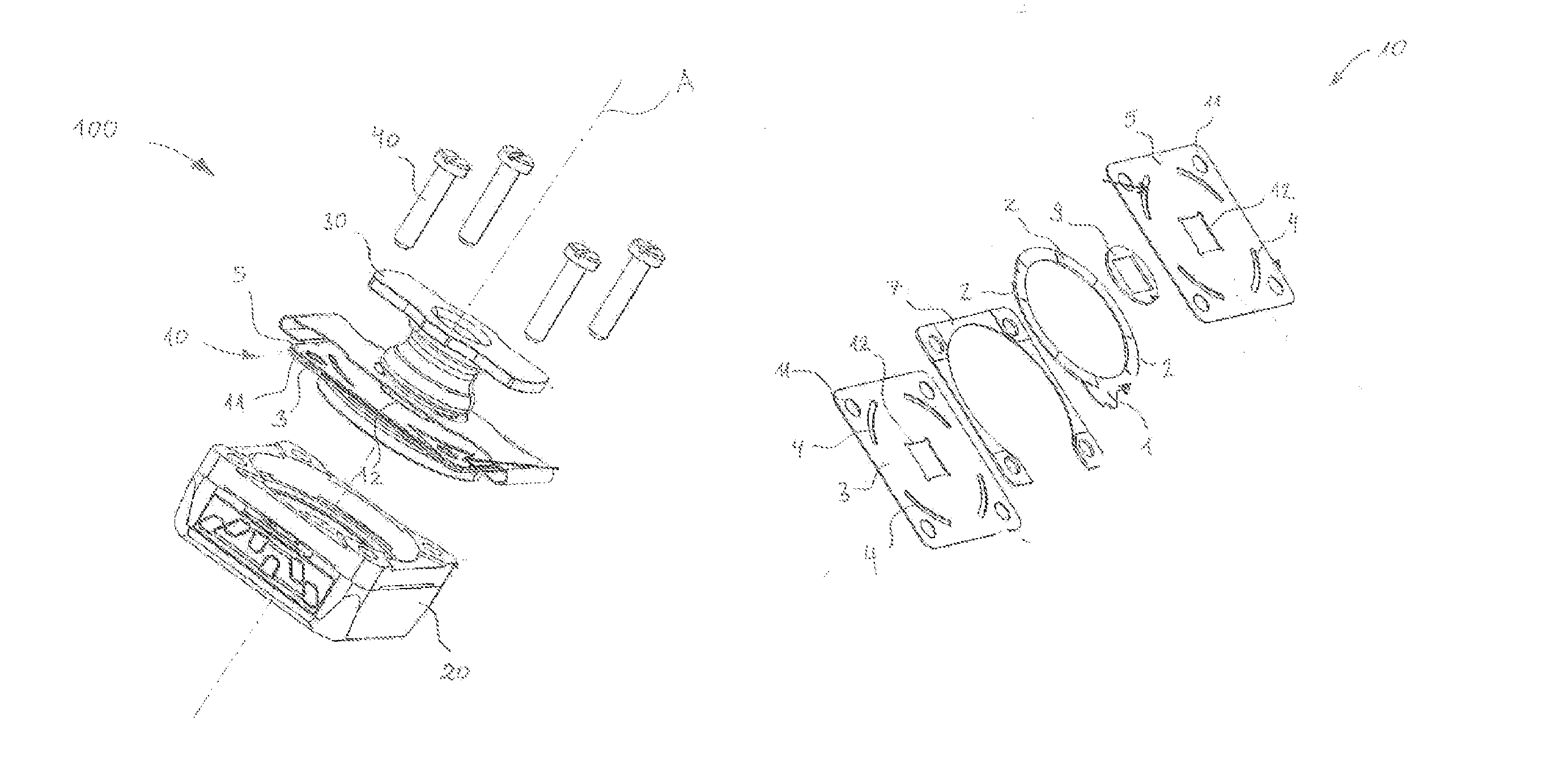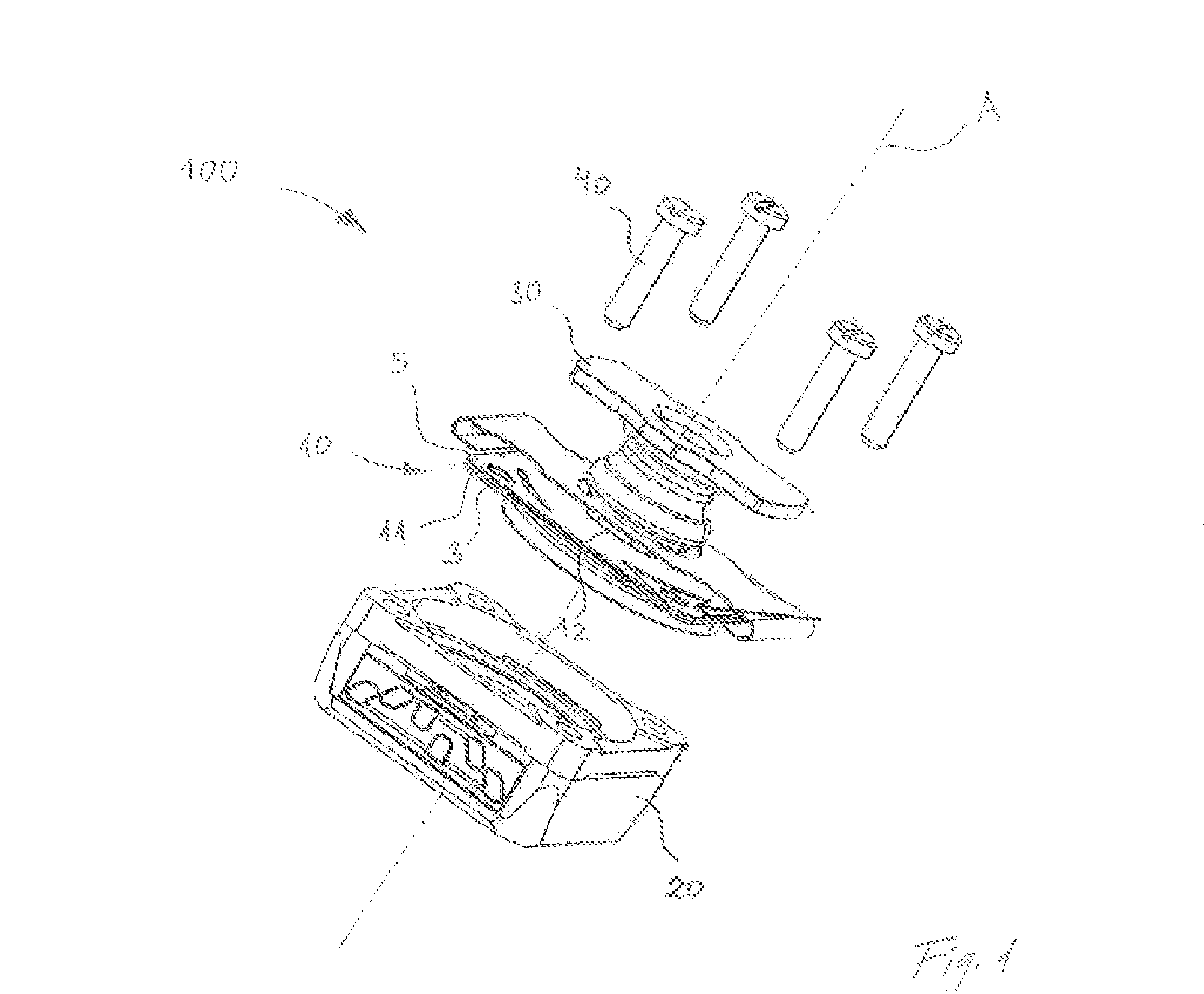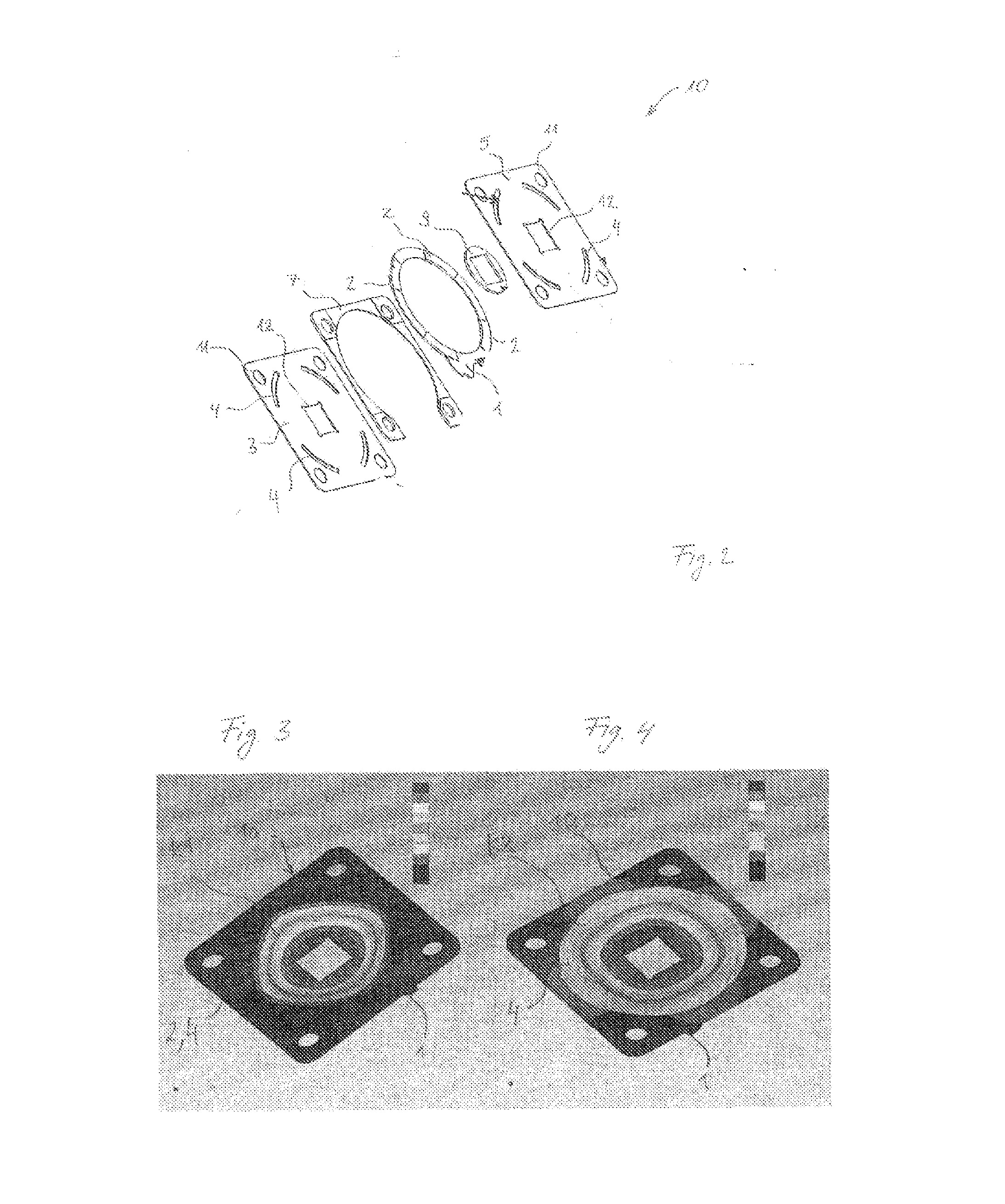Adjustable spring assembly for a vibrator of a bone anchored hearing aid
a technology of adjustable spring and bone anchored hearing aid, which is applied in the direction of deaf-aid sets, electric devices, etc., can solve the problems of poor production yield and mismatch to the firmware of the hearing aid, and achieve the effects of preventing spring assembly distortion, ensuring the spring rate of the vibrator, and robust attachment of the coupling
- Summary
- Abstract
- Description
- Claims
- Application Information
AI Technical Summary
Benefits of technology
Problems solved by technology
Method used
Image
Examples
Embodiment Construction
[0030]A vibrator 100 in FIG. 1 comprises a spring assembly 10, a mass 20, a coupling 30 attachable to a user's skull bone 101 (see FIG. 6) and a fastening means 40. The skull bone attachment could well be a screw 102 or similar bone anchor as shown in FIG. 6, which passes through the skin 103. The fastening means 40, which is provided as four screws, attaches the spring assembly 10 to the mass 20.
[0031]The spring assembly 10 comprises a suspension spring designed as a planar spring comprised of a base plate 3 and a cover plate 5. Base plate 3 and a cover plate 5 are of square shape and congruent to each other. Base plate 3 and cover plate 5 have a first end 11, which is designed as respective four bores, located in a peripheral region and a second end 12 located in a center region of their planes. The first end 11 is immovably connected to the mass 20, the second end 12 immovably connected to the coupling 30.
[0032]The base plate 3 and the cover plate 5 may be round or rounded in sha...
PUM
 Login to View More
Login to View More Abstract
Description
Claims
Application Information
 Login to View More
Login to View More - R&D
- Intellectual Property
- Life Sciences
- Materials
- Tech Scout
- Unparalleled Data Quality
- Higher Quality Content
- 60% Fewer Hallucinations
Browse by: Latest US Patents, China's latest patents, Technical Efficacy Thesaurus, Application Domain, Technology Topic, Popular Technical Reports.
© 2025 PatSnap. All rights reserved.Legal|Privacy policy|Modern Slavery Act Transparency Statement|Sitemap|About US| Contact US: help@patsnap.com



